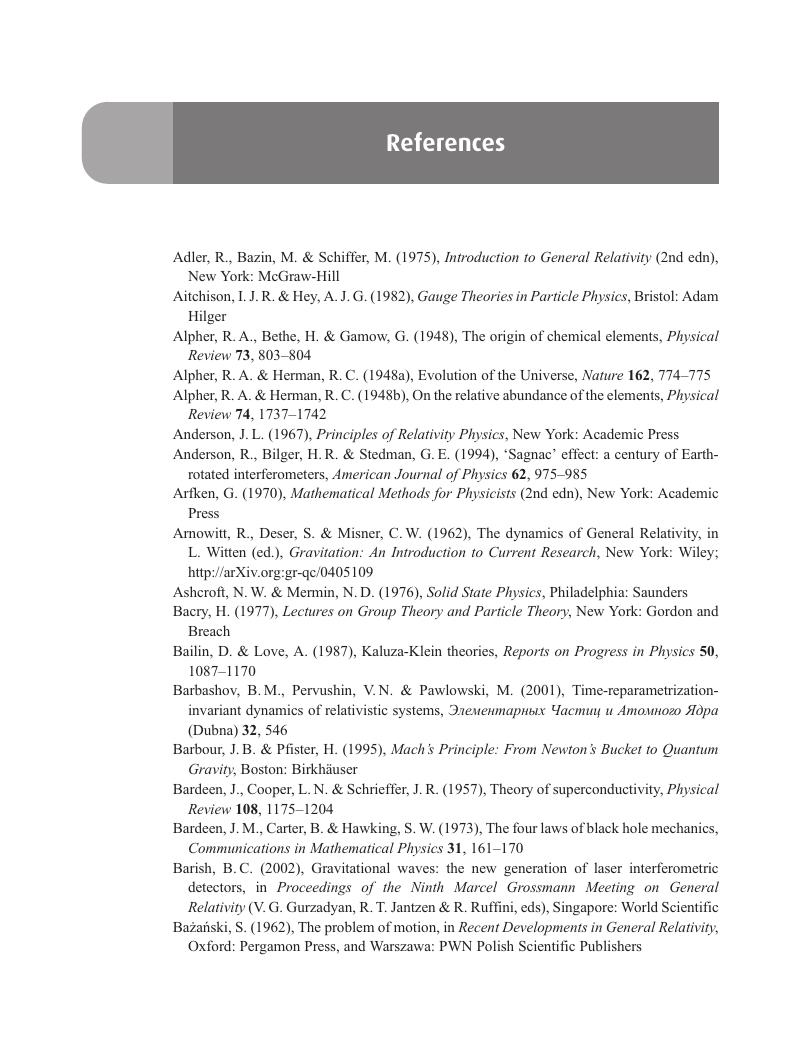Book contents
- Frontmatter
- Contents
- Preface
- Notation, important formulae and physical constants
- 1 Introduction
- 2 Special Relativity, non-inertial effects and electromagnetism
- 3 Differential geometry I: vectors, differential forms and absolute differentiation
- 4 Differential geometry II: geodesics and curvature
- 5 Einstein field equations, the Schwarzschild solution and experimental tests of General Relativity
- 6 Gravitomagnetic effects: gyroscopes and clocks
- 7 Gravitational collapse and black holes
- 8 Action principle, conservation laws and the Cauchy problem
- 9 Gravitational radiation
- 10 Cosmology
- 11 Gravitation and field theory
- References
- Index
- References
References
Published online by Cambridge University Press: 05 June 2012
- Frontmatter
- Contents
- Preface
- Notation, important formulae and physical constants
- 1 Introduction
- 2 Special Relativity, non-inertial effects and electromagnetism
- 3 Differential geometry I: vectors, differential forms and absolute differentiation
- 4 Differential geometry II: geodesics and curvature
- 5 Einstein field equations, the Schwarzschild solution and experimental tests of General Relativity
- 6 Gravitomagnetic effects: gyroscopes and clocks
- 7 Gravitational collapse and black holes
- 8 Action principle, conservation laws and the Cauchy problem
- 9 Gravitational radiation
- 10 Cosmology
- 11 Gravitation and field theory
- References
- Index
- References
Summary

- Type
- Chapter
- Information
- Introduction to General Relativity , pp. 425 - 438Publisher: Cambridge University PressPrint publication year: 2009



